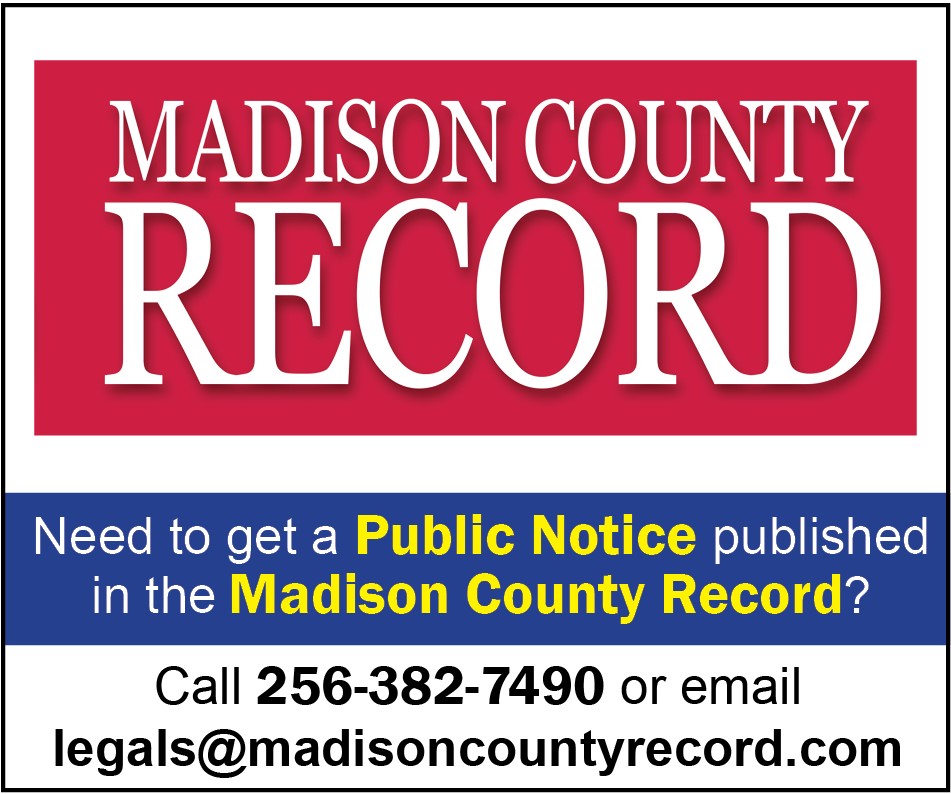Tornado alley
By Staff
Meteorologists gear up for another tornado season
Thomas Tingle
Record Managing Editor
Can the state-of-the art weather technology purchased for the new National Weather Service office in Huntsville predict how many tornadoes or the number of severe weather outbreaks the Tennessee Valley area could experience during the months of March, April and May?
With those three months considered the most active and deadly periods of time during the year for tornado outbreaks, meteorologists at the NWS say its easier to predict what the weather is going to do during the spring months – which is a good thing since the Tennessee Valley is located in one of two "tornado alleys" that exists in the country.
The NWS in Huntsville officially went into operation on Jan. 14. According to Matt Zika, senior meteorologist, the past two months have been relatively quiet, but now that spring is just around the corner, he predicts that he and his colleagues will be busy. Having worked in the industry for nearly 10 years, Zika said the equipment and technology available in Huntsville is among the best there is.
Kurt Weber, an intern at the NWS, has been gathering information about tornado outbreaks in the area from as far back as 1874. Weber said predicting what the severe weather season in the Tennessee Valley will be like is complex. Could the El Nino event that occurs in the Pacific Ocean affect the number of tornadoes we might see?
"Although we've been in a classic El Nino pattern since January, information from the Climatic Data Center indicates that the El Nino pattern is beginning to weaken. Forecasters say it appears that in cases where three or more years of El Nino occurred within the specified 10-year periods, there were a corresponding higher number of tornadoes. El Nino may or may not be the actual cause of this increase," Weber said. "To give you a forecast for severity of tornadoes or total number of tornadoes for this area is very complex and our field is not advanced enough to do that at this point. However, having had a classic El Nino period continuing into January, I would expect at least a typical severe weather season."
Weber has also been collecting information about the number of tornado occurrences in the 11-county coverage area by the NWS.
"About 1,000 tornadoes occur on average every year in the United States. The actual average is unknown because tornado spotting and reporting methods have changed so much in the last decades that the officially recorded tornado climatologies are believed to be incomplete," Weber said. "Also, during the course of recording thousands of tornadoes, errors are bound to occur."
From 1874 to 2002, 50 tornadoes have been reported in Madison County alone. In the 11-county coverage area, 283 tornadoes have been reported.
"Madison County had two tornadoes in 2002, two tornadoes in 2001, zero tornadoes in 2000, zero tornadoes in 1999, two tornadoes in 1998, four in 1997, zero in 1996 and one in 1995," Weber said. "Keep in mind that in 1995, the only tornado to hit Madison County was an F4 that had winds between 207-260 mph. Again, since we had a classic El Nino period, we could experience at least three to five tornado days this year."
From a working standpoint, Weber said he's looking forward to the spring months and being able to work on the cutting edge of weather technology.
"I would never want to experience having to go through a tornado, but I am very interested in learning as much as I can and helping to give the best and the most accurate weather forecast and prediction possible," Weber said. "It will be interesting to see what happens during the next three months and having this type of weather technology available to do the job is great."
As Alabama nears its most active tornado season, the National Weather Service offers the following safety tips:
1. If a tornado watch is issued, you generally should get as low as you can. A basement below ground level or at least on the lowest floor of a building offers the greatest safety. And, put as many walls between yourself and the outside as possible. Avoid windows and glass doors. In a home or small building, go to the basement or a small interior room such as a closet or bathroom or interior hall. If available, get underneath something study, like a heavy table. Protect yourself from flying debris by covering yourself with pillows, heavy coats of blankets. You can also use a bicycle or motorcycle helmet to protect your head.
2. If you are in a mobile home or automobile, leave them and go to a strong building. If there is no shelter nearby, get into the nearest ditch or depression and lie flat with your hands shielding your head.
3. If you are in a school, nursing home, hospital, factory, or shopping mall, go to a pre-designated shelter area. Basements are the best, but like a home, interior hallways on the lowest floor also offer protection. Close all doors to the hallway for even greater protection.
Wherever you are, don't bother opening or closing windows during a tornado. It won't protect the structure and flying debris as you try to open them could hurt you.
The greatest lesson is this: stay away from doors, windows and outside walls and protect your head.
Madison County site named most tornado-prone in state
The most tornado-prone site in Alabama is located in Madison County.
A new study points to a spot in a cotton field off a Madison County road as the most tornado-prone location in the state. The study released by VorTek LLC pinpoints the most dangerous spot, about 100 yards south of Douglas Road, about six miles north of Madison.
The Huntsville firm's analysis is based on National Weather Service figures of land churned over by tornadoes in a 20-mile radius from 1950-2001. That area had 50 tornadoes, including four F5 storms – the strongest. An average of 1,090 acres were disturbed each year in that 20-mile radius.
VorTek LLC has been putting out lists of tornado-prone states and cities of 100,000 or more. It also is developing a system of detecting tornadoes on the ground through vibrations. It hopes communities will use the system someday as part of their storm warning systems.






